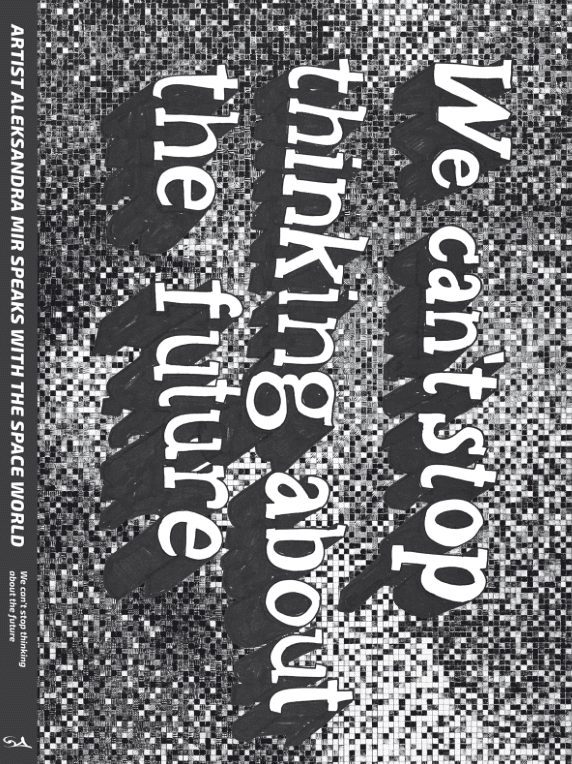To accompany the exhibition, Aleksandra Mir – Space Tapestry: Earth Observation & Human Spaceflight (24 June — 12 November 2017), we’ve created a reading list exploring some of the themes within the exhibition. A selection of these titles will be available to purchase in the Modern Art Oxford Shop until the end of November 2017.

We Can’t Stop Thinking About The Future: Artist Aleksandra Mir Speaks with the Space World (2017)
Aleksandra Mir
Strange Attractor Press
This catalogue accompanies Aleksandra Mir’s Space Tapestry, exhibited at both Modern Art Oxford and Tate Liverpool. Inspired by the Bayeux Tapestry and its depictions of Halley’s Comet in 1066, Space Tapestry tells an episodic visual story of Space travel through the medium of vast monochrome drawings. This essential publication captures Mir’s finished work alongside images from its collaborative creation with twenty-five young artists. New interviews with a wide range of professionals working in the Space industries today provide a rich insight into the present and future of Space exploration.

Lost in Space (2005)
Andrew Dodd
‘And so, the moon returns nightly to haunt us like some Marie Celestis, carrying the ghosts of our dreams and aspirations.’ – Andrew Dodd
Considering the memorialisation of images, documents and recordings of the first lunar landing in 1969, Lost in Space reflects upon the distant site of the actual event, with its footprints, abandoned detritus and the Landing Module preserved forever in zero atmosphere. The book draws from NASA archives, historical ephemera and correspondence with specialists in the field to collect and frame those obsolete objects which were once so invested with dreams and ambition.

Memories of the Moon Age (2016)
Lukas Feireiss
With reference to Aleksandra Mir’s work, First Woman on the Moon (1999), Memories of the Moon-Age takes readers on a tour of the cultural history of lunar exploration. Exploring past, present, and future, this book’s discourse ranges from Galileo’s invention of the telescope all the way through to Stanley Kubrick’s 2001: A Space Odyssey and the legacy of the Apollo landing.

Satellite: Innovation in Orbit (2017)
Doug Millard
Published in association with the Science Museum, London, this beautifully illustrated book explores the ubiquitous yet mysterious network of satellites proliferating our skies. From their experimental engineering history to the Cold War Space race in which early models such as Sputnik became household names, author Doug Millard pays overdue tribute to the crucial role of satellites in our everyday lives.

Six Stories from the End of Representation (2008)
James Elkins
In Six Stories from the End of Representation, art historian and critic James Elkins visually explores and tests the interrelationship between artists, scientists and humanities theorists. Through story telling, Elkins compares how artists and scientists view art, exploring subjects ranging from painting and photography to astrophysics and microscopy.

Picturing the Cosmos (2012)
Elizabeth A. Kessler
In her in-depth study, Elizabeth A. Kessler examines the scientific yet highly artistic process of capturing and rendering images of deep Space. The book highlights those deliberate decisions made by astronomers when assigning colour and composition to raw satellite data, resulting in the stunning images we can view in books, on the television and online. Drawing from theories of the sublime, Kessler goes on to propose a fascinating resemblance between deep space imagery and nineteenth-century painting and photography of the American West.

The Intimate Universe (2016)
Dr Marek Kukula
In The Intimate Universe, Dr Marek Kukula, Astronomer at the Royal Observatory in Greenwich, challenges the feeling of detachment we often associate with the vast, inconceivable cosmos. Instead, Kukula explores the myriad ways in which we are all intrinsically linked to the rest of the universe, revealing how everything on Earth has its origins in Space.
